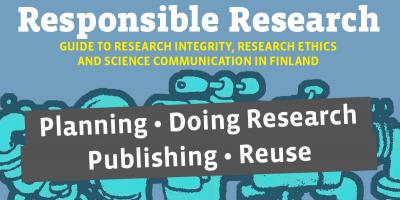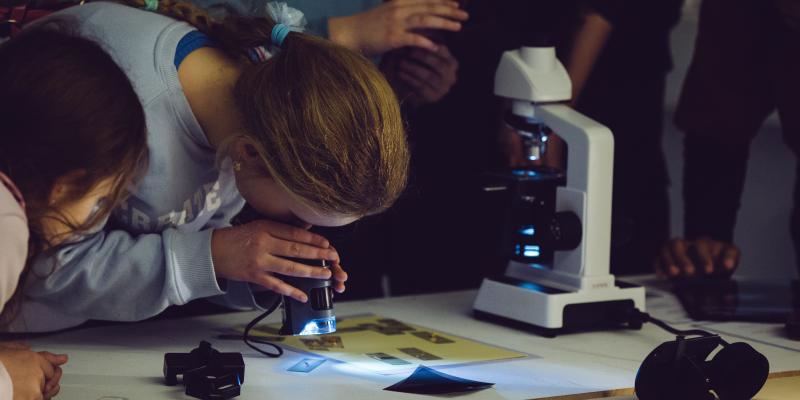Science centres invite their visitors to engage and learn by doing.
Today, there are almost 3,000 science centres and science museums around the world, attracting more than 350 million visitors a year. The growth is remarkable. When Tietomaa in Oulu and Heureka in Vantaa were founded, in 1988 and 1989 respectively, there were only about 400 science centres worldwide.
Interactive exhibition media of the kind found in science centres has become a worldwide movement. Behind the phenomenon is a desire to develop city centres, partly with an eye to tourism, but, above all, with a notion that science centres are excellent learning environments that strengthen the knowledge base of society by inspiring their audiences. Science centres have also been found to have an impact on young people’s career choices.
“Nobody ever flunked a science museum.”
What can reasonably be said about the importance of science centres in addition to their popular appeal? Formal learning is measured by examinations, tests, grades and certificates, but the museum cannot be passed and performance cannot be measured. “Nobody ever flunked a science museum,” as nuclear physicist, and founder of San Francisco’s Exploratorium, Frank Oppenheimer famously said. Here, Oppenheimer recognised the strength of museums; they engage their audiences – without pressure to pass a test. An interactive exhibition offers an opportunity to create dialogue with nature, its phenomena and its diversity. Oppenheimer called Exploratorium ‘a museum of science, art and human perception’.
Free-choice learning
Museums are said to be informal, non-formal learning arenas. This is true, but why be satisfied with a definition that is based on negation? It is typical for science centre visits to be fuelled by the visitor’s own choices and own actions – learning by doing. For this reason, the form of learning has been more accurately described as free-choice learning.
So much research has been conducted on learning at science centres that we are already able to describe many aspects of their impact. Interactive exhibitions produce several different types of learning results. For example, interview-based research has examined the experience of the public immediately after a visit, but also surveyed what people remember months afterwards. Learning results can roughly be divided into five types: knowledge and skills, understanding the bigger picture, new angles on a familiar topic, inspiring motivation and social learning.
Typically, each visitor reports that they experienced several different types of learning. Over time, knowledge and skills might fade from their mind, but in some cases the memories might even grow stronger, for example. One particularly fascinating type of learning is the last one on the list: social learning. Science centres are almost always visited in groups – for example less than one percent of Heureka’s visitors come alone. Interactive exhibitions place each visiting group in a new situation. This situation creates interaction in which the knowledge, skills, experiences, ideas and questions of the group’s members emerge. The group learn from each other, but also about each other.
A multisensory phenomenon experienced with the whole body is more memorable.
When science centre exhibitions are planned, a number of critical factors that aid learning and memorability are taken into account. For example, it is important to give the public genuine opportunities to exercise choice rather than merely offering one-way content. This means that visitors to the exhibition are in charge of their own visitor experience and that experience is personal. On the one hand, a museum visit should be stress-free and pleasant, but, on the other, it should also be suitably mentally challenging – and why not physically challenging as well. A multisensory phenomenon experienced with the whole body is more memorable. In the best case, interaction is two-way: the exhibition audience is allowed to comment or leave their mark on the exhibition and its content by some other means.
In planning science centre exhibitions, attention is paid to a wide diversity of visitors. Rather than age, sex and educational level, attention should be paid to the public’s expectations and motivation for their visit. For example, Heureka has found it beneficial to understand the five different types of audience and meet their expectations. This classification identifies groups in the science centre’s audience that are attending for completely different reasons.
Explorers are usually curious and mainly interested in whatever is on offer at the time. Facilitators are primarily satisfying someone else’s needs, e.g. of their child, their partner, or a friend or relative. Hobbyists and professionals visit the science centre because they have a clearly defined interest in a particular topic. Experience seekers are looking to tick off their experiences at the science centre’s most famous attractions. Rechargers want to enjoy the atmosphere and ambience rather than find out about a particular topic.
The identities behind these visits are situation-specific, and the same person can visit the exhibition for different reasons on different days. They might bring their child to the science centre today on the child’s terms, but decide to come back another time and do the things that they themselves are interested in.
Besides the exhibitions, the science centres typically also offer workshops, laboratory programmes, science show performances and different kinds of events. Many science centres have an outdoor exhibition area or a planetarium and all of them want to try out new ways of communicating science.
Science centres are perhaps at best firing people with curiosity and an interest in science, but they can also be partners to researchers, e.g. in data gathering. For example, the public visiting Heureka science centre have successfully been asked to participate in gathering many different kinds of material for research purposes.
Mikko Myllykoski, Experience Director, Heureka
Further information
K. C. Cole: Something Incredibly Wonderful Happens: Frank Oppenheimer and the world he made up (2009). University of Chicago Press.
Lynn D. Dierking & John H. Falk: The Museum Experience Revisited (2012). Left Coast Press.
John H. Falk: Identity and the Museum Visitor Experience (2009). Left Coast Press.
George E. Hein: Learning in the Museum (1998). Routledge.
Nina Simon: The Participatory Museum (2010). http://www.participatorymuseum.org
Nina Simon: The Art of Relevance (2016). http://www.artofrelevance.org
You might also be interested in
Tämä teos on lisensoitu Creative Commons Nimeä 4.0 Kansainvälinen -lisenssillä. Detta verk är licensierat under en Creative Commons Erkännande 4.0 Licens. This work is licensed under a Creative Commons Attribution 4.0 International license.

